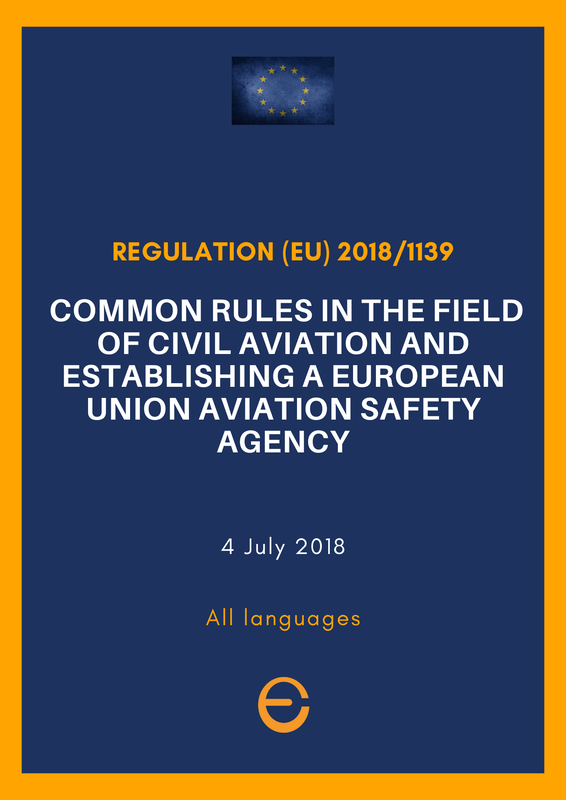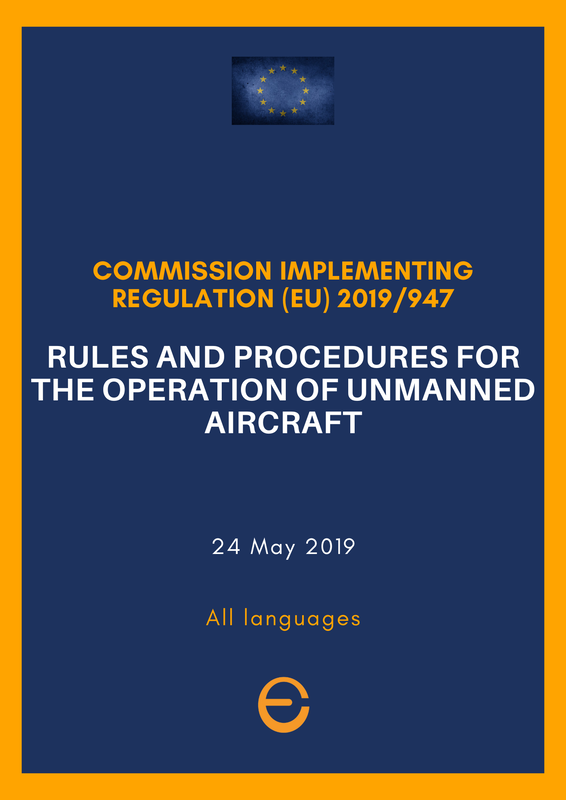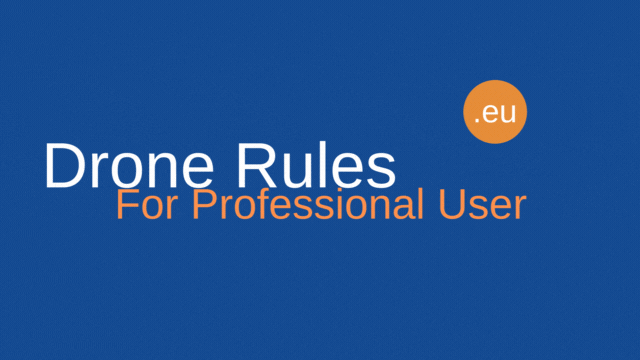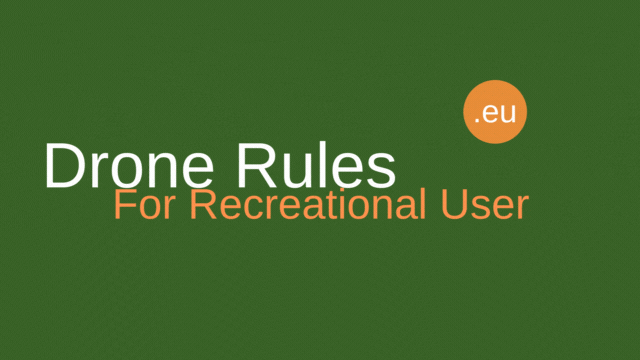|
Brussels, |
|
“Europe will be the first region in the world to have a comprehensive set of rules ensuring safe, secure and sustainable operations of drones both, for commercial and leisure activities. Common rules will help foster investment, innovation and growth in this promising sector”, Patrick Ky, Executive Director of EASA.
Drones are the future?
The unmanned aircrafts offer huge potential for developing innovative civil applications in a wide variety of sectors that will give a real benefit to the European society and they will contribute to creating many new businesses and jobs. By the Summer 2019, the EU could have for the first time common rules for drones. Currently, each Member State has its own rules.
Within 20 years, in Europe the drones' sector:
As civil aviation evolves towards more automation, drone technology will also be crucial for the competitiveness of the European aeronautics industry as a whole and the EU wants to contribute supporting this promising sector.
- will directly employ more than 100 000 people
- will have an economic impact exceeding €10 billion per year, mainly in services
As civil aviation evolves towards more automation, drone technology will also be crucial for the competitiveness of the European aeronautics industry as a whole and the EU wants to contribute supporting this promising sector.
EU Legislation for civil drones
|
EU adopted a risk-based approach, and as such, do not distinguish between leisure or commercial civil drone activities. What they consider is the weight and the specifications of the civil drone and the operation it is intended to conduct. It defines three categories of civil drone operations: the ‘open’, the ‘specific’ and the ‘certified’ category.
The EU regulatory framework::
|
|
Standards will complement this regulatory framework:
U-Space In recent years, the need for a UAS traffic management system (UTM) emerged in many parts of the world. This system will enable the safe operation of a large number of drones at low-altitude (especially in urban areas) as the ATM ensures the safety of aircraft operations at high altitude. The Commission, EASA and SESAR Joint Undertaking are working the development of a UTM concept for Europe, called U-Space. In order to support the development of the U-Space, the Commission has established European Network of U-space Demonstrators. Commission implementing Regulation (EU) 2021/664 on a regulatory framework for the U-space was adopted of 22 April 2021. EU common rules From 1st July 2019, the EU has common rules on drones and they replaced the previous national ones last 1st July 2020. A - Are you a drone operator? In this case you need to register in the country where you live or where have your principal place of business. You should refer to the list of NAAs’ drone website references by country at "Drones - National Aviation Authorities" for more details. Then, your product will be associated with one of the safety categories listed by EASA (the European Union Aviation Safety Agency) and which you will find below. B - Are you a drone user? Your purchase will respond to a business or leisure need. In both cases you will need to know which safety category your purchase corresponds to and the rules and standards you will have to comply with. |
The EU Rules include technical and operational requirements on:
- flown safely; drones will have to be individually identifiable, allowing the authorities to trace a particular drone if necessary.
- from any prior authorisation, to certified aircrafts and operators rules, till a minimum remote pilot training requirements for professional use.
The EU rules replace existing national rules in all Member States. As of June 2020, operators of drones need to register in the Member State where they have their residence or their main place of business.
Categories of civil Drones
|
Lower-risk civil drone operations in , where safety is ensured provided the civil drone operator complies with the relevant requirements for its intended operation. This category is subdivided into three subcategories, namely A1, A2 and A3. Operational risks in the ‘open’ category are considered low and, therefore, no operational authorisation is required before starting a flight.
|
Medium-risk civil drone operations, where safety is ensured by the drone operator by obtaining an operational authorisation from the national competent authority before starting the operation. To obtain the operational authorisation, the drone operator is required to conduct a risk assessment, which will determine the requirements necessary for the safe operation of the civil drone(s).
|
High-risk civil drone operations, where the certification of the drone operator and its drone, as well as the licensing of the remote pilot(s), is always required to ensure safety. Operational authorisation from the national competent authority
|
Drones - National Aviation Authorities
The EU Research Strategy
The EU helps the development and use of drones through its research programmes. Right now the EU is focusing on safety issues as the key to opening up a large market.
The use of drones in urban areas presents unique challenges. Cities are complex environments with a variety of obstacles, including tall buildings, narrow streets, and crowded areas. Furthermore, the risk of collisions with other aircraft or people is much higher in urban areas than in rural environments.
To make drones suitable for cities, researchers and engineers must overcome these challenges by developing new technologies and systems that can navigate the complex urban landscape safely and efficiently.
More recent research areas include:
Despite the challenges, the potential benefits of using drones in cities are significant. Drones could be used to deliver essential goods and services, monitor traffic and air quality, and provide rapid response in emergency situations. However, to realize these benefits, researchers and engineers must continue to work on developing new technologies and systems that can make drones safe and efficient in urban environments.
The use of drones in urban areas presents unique challenges. Cities are complex environments with a variety of obstacles, including tall buildings, narrow streets, and crowded areas. Furthermore, the risk of collisions with other aircraft or people is much higher in urban areas than in rural environments.
To make drones suitable for cities, researchers and engineers must overcome these challenges by developing new technologies and systems that can navigate the complex urban landscape safely and efficiently.
More recent research areas include:
- Global navigation satellite systems. Drones currently rely on GPS for location tracking, but the European Galileo network is also being tested as an alternative. DELOREAN, led by Pildo Labs, is testing Galileo's potential for drones, with support from Airbus, Correos, and Eurocontrol. Galileo's signal structure and waveform help avoid disruptions in urban areas, and the network offers higher accuracy for pinpointing locations. Galileo also provides an authentication service that allows drones to verify satellite signals, adding a layer of security and preventing theft of drone contents through fake signals.
- Sense and avoid technology: This technology enables drones to detect and avoid obstacles in their path. This is particularly important in cities where there are many potential obstacles such as buildings, trees, and power lines.
- Urban air traffic management systems: These systems are designed to manage the flow of drone traffic in urban areas to avoid collisions and ensure safe and efficient operation.
- Noise reduction technology: Drones can be noisy, which can be a concern in densely populated urban areas. Researchers are working on developing new technologies to reduce the noise generated by drones, such as quieter propellers and acoustic enclosures.
- Battery technology: Drones are powered by batteries, which have a limited lifespan. Researchers are working on developing longer-lasting and more efficient batteries to extend the range and flight time of drones.
- Communication systems: Drones need to be able to communicate with each other and with ground-based operators to ensure safe and efficient operation in urban areas. Researchers are developing new communication systems that can operate in crowded urban environments and provide real-time data on drone locations and movements.
Despite the challenges, the potential benefits of using drones in cities are significant. Drones could be used to deliver essential goods and services, monitor traffic and air quality, and provide rapid response in emergency situations. However, to realize these benefits, researchers and engineers must continue to work on developing new technologies and systems that can make drones safe and efficient in urban environments.
The European Union Aviation Safety Agency
SESAR Joint Undertaking
Source: European Union, http://www.europa.eu/, 1998-2024
|
Brussels - Milano - Nice - Tokyo
|
eEuropa Belgium
Avenue Louise, 367 1050 Brussels BELGIUM Bld. Franck Pilatte, 19 bis
06300 Nice FRANCE YONO HOUSE 9-1 KAMIOCHIAI, SAITAMA-SHI, SAITAMA-KEN 〒 338-0001 JAPAN Via S. Veniero 6 20148 Milano ITALY |
All rights reserved - © Copyright eEuropa Belgium 2020-2024









